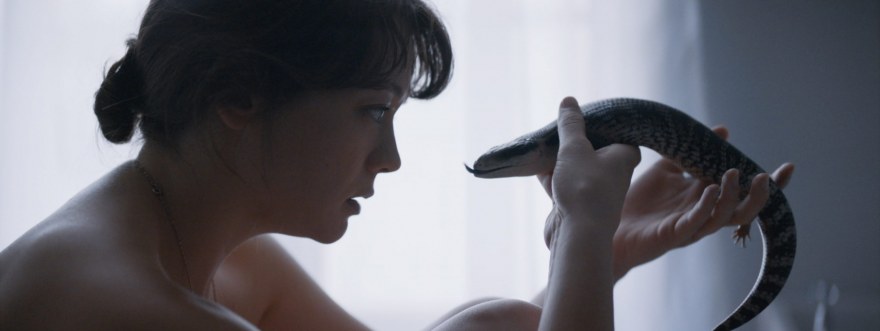Tea time with Daniel
Interview with Claire van Beek, director of Daniel
What did you seek to explore through Joan’s experience?
I explore the power of desire; the importance of touch, and the complexity of female sexuality. I wanted to get inside the psyche of a young woman confronted with the force of sexual desire. Joan suddenly finds that her solace and routine is ripped apart and replaced with what she had been trying to hide from – instinct and impulse. However, Joan’s experience could be a metaphor for all of us – when we have that voice in our head that says “I want something different”, do we embrace the risk – or do we stay in the security of what we know, even if it is at the denial of what we really want?
Is her story based on someone you met? What sort of research did you do?
It is based on the often hidden or frowned upon elements of female identity, including female rage. In terms of research, I did a lot of lizard research, which is how I stumbled upon the locusts. I couldn’t believe the connections between locusts, religion and the themes of the film. The locusts have a lifecycle of adult, egg, nymph – which Joan connects to the trilogy of the Father, Son and Holy Spirit. Locusts are primal and unashamed, biblical, and Joan is almost jealous of how they can shed their skin and become something else. On top of this, locusts are so visually and aurally fascinating! I ended up breeding locusts in my own shed for nearly a year and got to know them pretty well.
Any particular reason you chose the name Daniel?
This was an extremely difficult choice. I had a list of over 100 names, and even tested it! Spoiler – Regardless, the name of the lizard was always going to be Daniel. I loved that it was so normal, so humble. But should it be my title? It offers a lot – it is an anagram of Denial, which is a strong theme of the film. It is biblical, meaning “God is my judge”. What more could I want?! I also liked that it was a male name – it allows the film to be unexpected, and challenge expectations.
Tell us more about the specific selection of animals. How was it shooting with them?
The locusts at my house were always eating, escaping, mating, often all at the same time. They were hilarious, mesmerizing and terrifying. However, when it came to shoot, they were a bit shyer, and it was difficult to catch any laying their eggs into the soil (which is a bizarre and captivating thing to watch!). The lizards – we had three – loved our actress’s warm skin and would often fall asleep on her. I adore the chicken footage – their legs and claws almost lizard-like. They are vicious and curious. I adore nature, and they are an essential part of Joan’s world and connection to touch and observation. In terms of shoot, patience, time, care and flexibility is the essential quadrangle for working with animals. We had a second unit to get the extreme close-ups.
It is a largely silent film. Can you tell us more about that choice? And about the music for the end credits?
Well, not silent. We have a soundtrack and sound design which is quite stunning, I think. But yes, not a lot of talking! Joan was always an isolated, quiet and shy character, and so she never had much dialogue, but we stripped back even more in the edit. Joan is an introvert, her communication is through observation, solitude and touch. The immense journey of Joan is a testament to Edith – our incredible actress. Also, this is a highly visual film, and in this quiet world each line of dialogue is gentle and considered. In terms of end credits, Indira Force was our composer. She is a New Zealander living in Berlin and is exceptionally talented. I adore the final track and feel so proud whenever I hear it. The drums link the primal, the choral voices speaks to the female. It is a powerful piece. Because the film is quite rich, and the ending (spoiler) intense, the track needed to give the audience time to sit with the film. The combo of the credits and final track allow the audience that space.
Are there any works of art or films that have inspired you?
Oh, so many! I love Michael Haneke, Jonathan Glazer, Pedro Almodóvar (not an inspiration for this film, just in general) and Jane Campion of course! I am especially lucky to currently be working with Jane on her latest stunning film The Power of the Dog.
Would you say that the short film format has given you any particular freedom?
Absolutely. I adore short films. The opportunity for a potent exploration of a single theme or idea is liberating via short film. You can do deep, linger on ideas, explore, create… Short films are an almost perfect art form.
Daniel is part of International Competition I5.








